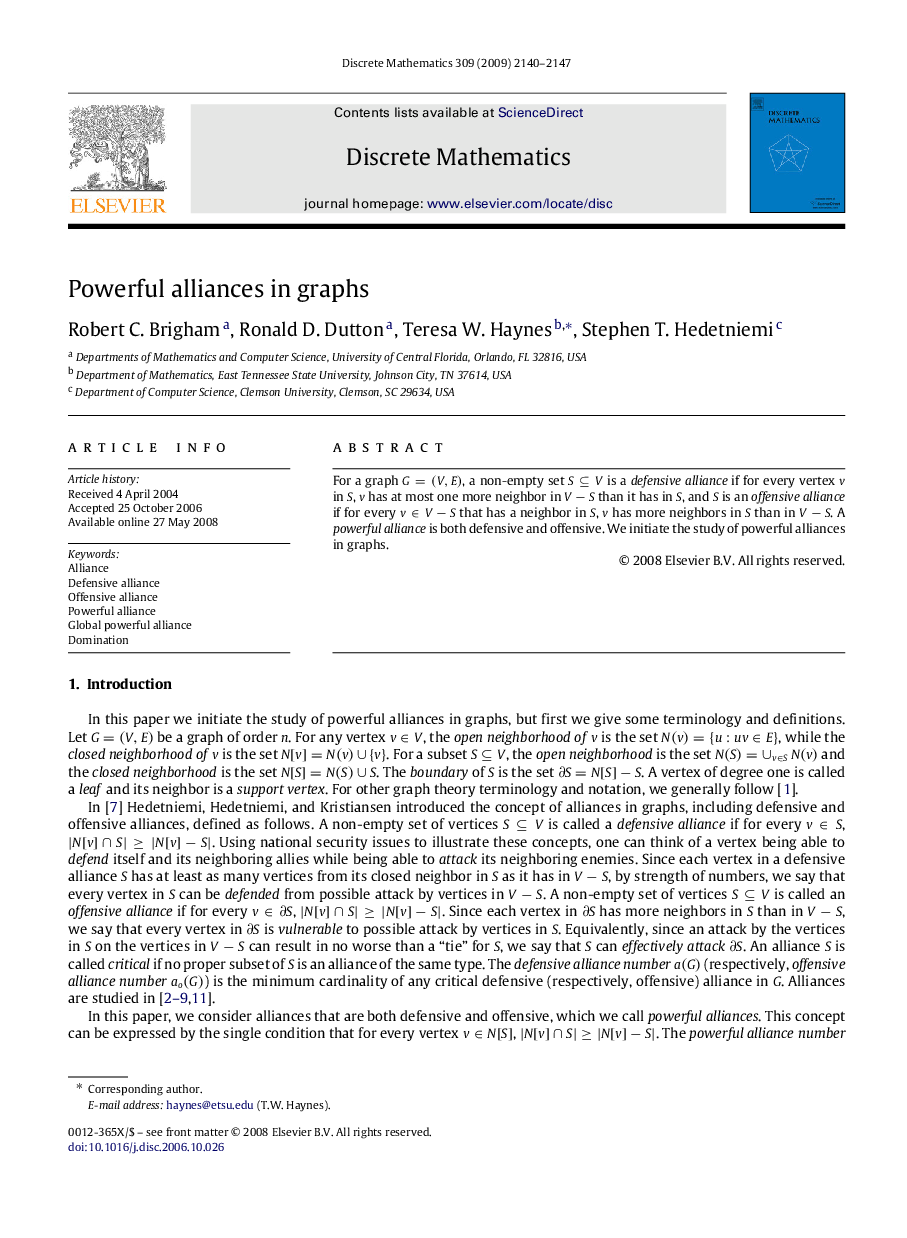| Article ID | Journal | Published Year | Pages | File Type |
|---|---|---|---|---|
| 4649738 | Discrete Mathematics | 2009 | 8 Pages |
Abstract
For a graph G=(V,E)G=(V,E), a non-empty set S⊆VS⊆V is a defensive alliance if for every vertex vv in SS, vv has at most one more neighbor in V−SV−S than it has in SS, and SS is an offensive alliance if for every v∈V−Sv∈V−S that has a neighbor in SS, vv has more neighbors in SS than in V−SV−S. A powerful alliance is both defensive and offensive. We initiate the study of powerful alliances in graphs.
Keywords
Related Topics
Physical Sciences and Engineering
Mathematics
Discrete Mathematics and Combinatorics
Authors
Robert C. Brigham, Ronald D. Dutton, Teresa W. Haynes, Stephen T. Hedetniemi,
